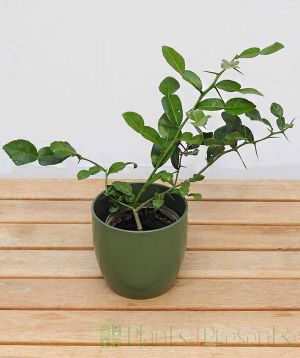Chilli Plant
Out of stock


- Apache chilli, very happy on a sunny windowsill
- Produces masses of chillies
- Delivered with ripening red and green fruits
We'll be growing more of these popular chillies in 2026 so please do check back in the spring. In the meantime we have lots of other great edible plants available for next day delivery.
Harvest these fiery red fruits regularly for a bumper harvest for many more weeks to come.
Great gifts for chefs and food lovers, order them on their own here or as a pair
 4.9/ 5
16 reviews
4.9/ 5
16 reviews



Bought this plant for my daughter in college in London. Ordering was easy. Delivered within a few days. Very healthy plants full of chillis.

I have already reviewed this purchase but I will say again, fantastic chilli plant producing masses of large chillis and came in a lovely yellow ceramic pot. Excellent quality once again, just like the lovely lemon tree I purchased.

Plant received gratefully by friend

Good quality plant with some chillis on already ... Dad was delighted with his gift.

Plant arrived well packaged and protected - thanks!

Chilli plant was full of fruit and in good condition.

Lovely little plant with many fruits, some already ripened.

I’m delighted with the chilli plant. It arrived with chillies growing and flowers for many more

Excellent and friendly service. Top quality plant.

Great fast, efficient service and lovely plant for Father’s Day.

These instructions are sent with the plant gift
These chilli plants (capsicum annum) love sunlight. In summer they will be happiest on a sunny windowsill, in a greenhouse or conservatory, or outside on a sheltered patio.
As soon as the autumn frosts arrive they need to be under cover. If you have not got a greenhouse a sunny window sill will be fine.
Whilst chilli plants are in small pots they will need regular watering. Remove the plant from its basket or pail and water from the top and let the excess drain away. Allow the top of the soil to dry out completely before watering again, particularly during the cold months.
The natural inclination of these chilli plants, being annuals, is to die back after fruiting. However we have found from experience that it is possible to coax them into a second year if you cut off all the chillies and prune the plant heavily at the end of the season, and then wait patiently for new growth to reappear in the Spring.
Any problems are usually associated with overwatering. If the plant becomes waterlogged its roots need to be allowed to dry out and then a normal watering pattern re-established.If the leaves start to droop and the flowers start to curl you know it is thirsty, so water straight away. Yellow or brown edges to leaves is normally the result of low light levels in the winter but very yellow leaves are a sign that your plant is lacking nutrients so give it a good feed with any general houseplant or tomato feed and remove any discoloured leaves. Your plant will also benefit from being repotted in mid Summer - choose a good general purpose potting compost and a pot that is only slightly larger. Our plants are grown in a pesticide free environment. In the unlikely event that you find any pests (including aphids or caterpillars) on your plant use a soft soap or pest spray to wash off the offending creatures and pick off any damaged leaves to keep the plant tidy.
These peppers are quite hot and are delicious in curries, stir-fries stews and Mexican dishes. Store in a sealed container in the fridge if you can"t use them straight away.
More Information
Scientific Name:Capsicum annum "Apache"
Annual chilli pepper.
Small white flowers
Small spicy green fruit will ripen to a rich red
Will provide an ample harvest with surprisingly little care.
http://davesgarden.com/pf/b/Solanaceae/Capsicum/none/cultivar/180
Chilli peppers are native to South and Central America where there is evidence of their consumption as far back as 7500 BC . They were introduced to South Asia in the 1500s and have come to dominate the world spice trade. As well as playing an essential role in South Asian food chillies have entered superstitions and rites












